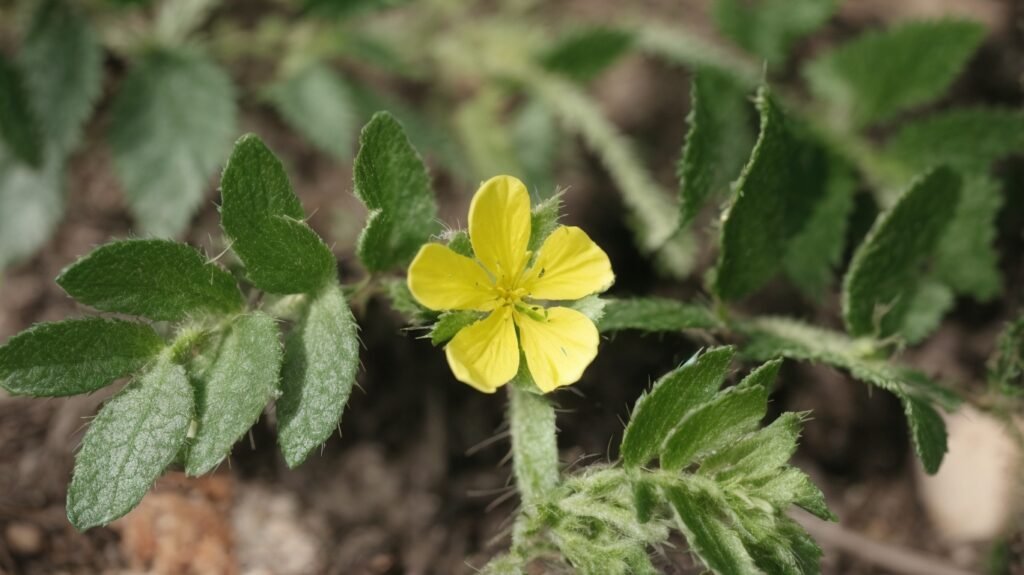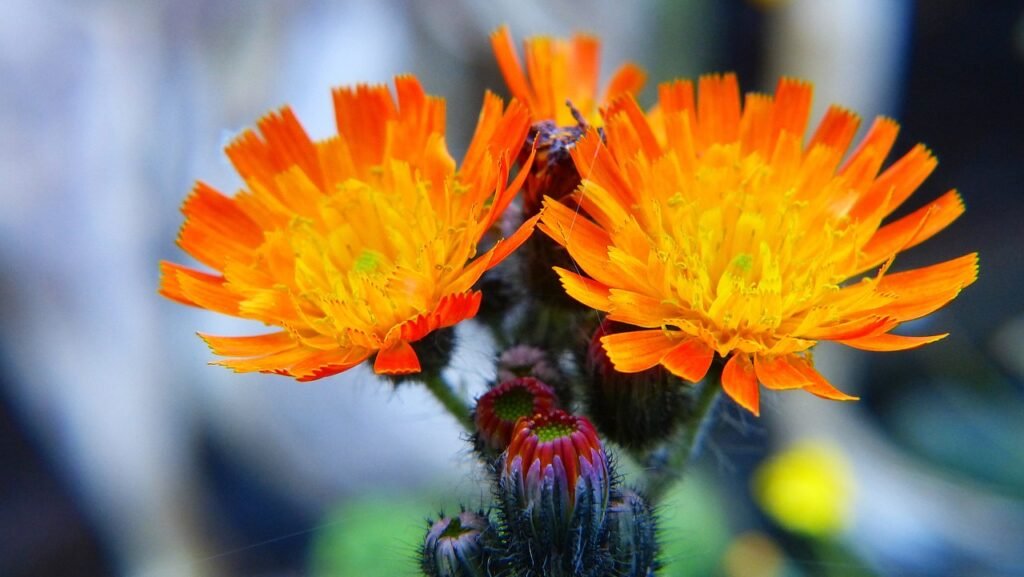
What is Puncturevine and why is it a problem?
Puncturevine, also known as Tribulus terrestris, is a highly invasive weed that poses significant challenges to gardeners and landscapers alike. This low-growing plant is characterized by its thorny branches and small yellow flowers that eventually develop into spiky seed pods. Puncturevine is a problem because its seeds possess sharp thorns that can easily puncture tires, shoes, and even the skin of humans and animals.
The main issue with Puncturevine is its ability to spread rapidly, making it difficult to control once it takes hold in an area. The seeds of this weed can survive for several years in the soil, waiting for the right conditions to germinate and grow. Once established, Puncturevine competes with desirable plants for nutrients and resources, ultimately reducing their vigor and overall health. Moreover, its tendency to multiply quickly makes it a formidable opponent in gardens and landscapes, often crowding out other plants and dominating the area. The aggressive nature of Puncturevine and its detrimental impacts emphasize the importance of understanding its life cycle and implementing effective control measures.
Understanding the life cycle of Puncturevine
Puncturevine, also known as goathead weed, is a noxious invasive plant that can cause numerous problems in gardens and landscapes. Understanding its life cycle is essential for effective management and control. Puncturevine starts its life as a small seed, which can remain dormant in the soil for several years. When the conditions are right, the germination process begins, and tiny seedlings emerge.
As the seedlings grow, they develop into sprawling vines with small leaves and distinctive yellow flowers. These flowers eventually give way to spiky seed pods, each containing several sharp and rigid spines. The spines are the primary reason why Puncturevine is such a nuisance and a danger to humans and animals. They can easily puncture tires, shoes, and even the skin of unsuspecting passersby. The lifecycle of Puncturevine continues as the seed pods mature and dry out, eventually bursting open to release the seeds, which are equipped with their own set of spines for dispersal.
Identifying Puncturevine in your garden or landscape
Puncturevine, also known as Tribulus terrestris, is a weed that can quickly spread throughout your garden or landscape if left unchecked. Identifying this invasive plant is crucial in order to take effective action against its growth. Puncturevine has distinct features that set it apart from other plants. Its leaves are small and fern-like, with multiple pairs of leaflets that are sharply toothed. These leaflets are arranged in a pinnate manner along a central leaf stalk. One of the most distinguishing characteristics of Puncturevine is its fruits, which are small and spiky, resembling a goat’s head. These fruits are equipped with hard, sharp spines that can cause pain and injury if stepped on or touched. By being able to recognize these key features, you can successfully identify Puncturevine in your garden or landscape.
In addition to its appearance, Puncturevine is typically found in dry and sandy soil. It often thrives in areas with full sun exposure, such as open fields, vacant lots, and gravel driveways. This weed can also take root along roadsides or in disturbed areas, making it an unwelcome guest in urban and suburban landscapes. To spot Puncturevine, keep an eye out for its spreading vine-like stems that can grow up to several feet in length. As the plant matures, it produces small yellow flowers with five petals. By knowing where and when Puncturevine commonly grows, you can proactively detect its presence and prevent its further spread.
The dangers of Puncturevine and its impact on humans and animals
Puncturevine may seem like just another annoying weed, but it poses serious dangers to both humans and animals. Its spiny seed pods, commonly known as goatheads, can cause painful injuries when stepped on or contacted. These sharp, barbed seeds have the ability to puncture bicycle tires, pet paws, and even human skin. The injuries can be quite painful, leading to discomfort and potential infections. Additionally, the seeds can cause damage to agricultural crops, making it a concern for farmers and gardeners alike.
Not only are humans affected by puncturevine, but animals are also at risk. Pets, such as dogs and cats, can easily step on the goatheads, leading to uncomfortable foot injuries. The sharp seeds can also become embedded in their fur, causing irritation and potential infection. Additionally, livestock animals that graze in pastures infested with puncturevine can unknowingly consume the plant, leading to digestive issues and discomfort.
It is important to be aware of the dangers that puncturevine can pose to both humans and animals. Taking preventive measures and implementing effective control methods can help mitigate these risks and create a safer environment for all.
Natural methods for controlling Puncturevine
One effective natural method for controlling Puncturevine is through manual removal. This involves physically pulling the plants out of the ground, making sure to remove the entire root system. It is important to wear gloves when handling Puncturevine as its spines can cause skin irritation. Manual removal should be done regularly and consistently to prevent the plants from re-establishing.
Another natural method is the use of mulch to suppress Puncturevine growth. Applying a layer of organic mulch, such as wood chips or straw, around the base of plants can help smother Puncturevine and inhibit its germination. Additionally, mulch helps retain soil moisture and suppress the growth of other weeds. It is crucial to replenish the mulch layer regularly to maintain its effectiveness.
Using herbicides effectively to combat Puncturevine
When it comes to combating Puncturevine, using herbicides can be an effective approach. Herbicides are chemical substances specifically designed to kill or control plants, including invasive weeds like Puncturevine. However, it is crucial to use these herbicides effectively to ensure maximum efficiency and minimize any potential harm to the environment.
One important factor to consider when using herbicides is timing. Puncturevine is most vulnerable during its early growth stages, so it is recommended to apply herbicides when the plants are young and actively growing. Targeting the plants at this stage increases the chances of successful control and reduces the need for repeated applications. Additionally, it is important to follow the instructions provided by the herbicide manufacturer, including dosage, dilution rates, and proper application methods. Adhering to these guidelines will help ensure the herbicides are applied in the most effective and safe manner.
Preventive measures to avoid Puncturevine infestation
Maintaining a weed-free environment is crucial in preventing Puncturevine infestation. Regularly inspecting your garden or landscape for any signs of this invasive plant is the first step towards prevention. Be vigilant and remove any weeds or vegetation that may serve as a potential breeding ground for Puncturevine seeds. This can effectively eliminate the risk of the plant establishing roots and spreading.
Another important preventive measure is to be cautious when introducing new plants or soil into your garden. Puncturevine seeds are known to hitch a ride on clothing, tools, and even the tires of vehicles. Therefore, it is essential to thoroughly inspect any incoming materials to ensure they are free from Puncturevine seeds. Taking the time to carefully examine and sanitize these items can save you from future headaches and the potential invasion of this troublesome plant.
Best practices for removing Puncturevine safely
To safely remove Puncturevine from your garden or landscape, it is important to follow some best practices. Firstly, make sure to wear protective gloves and clothing to avoid any direct contact with the plant’s thorny stems and leaves. Using a sturdy pair of gardening gloves will provide the necessary protection while handling the plant. Additionally, consider wearing long sleeves and pants to prevent any accidental scratches or cuts.
When removing Puncturevine, it is crucial to be thorough to prevent regrowth. Begin by carefully uprooting the plant, ensuring that you remove all parts, including the roots. The roots of Puncturevine can be quite deep, so use a garden trowel or shovel to loosen the soil around the plant before pulling it out. Dispose of the plant material properly to avoid accidental spreading of seeds. Bagging the Puncturevine and discarding it in the trash is the best practice, as composting may not effectively kill the seeds. Remember that proper disposal is essential to prevent the plant from reestablishing itself in other areas of your garden or landscape.
Creating a weed-free environment to prevent Puncturevine growth
A weed-free environment is essential in preventing the growth and spread of Puncturevine. This troublesome weed can quickly take over gardens and landscapes if not properly controlled. To create a weed-free environment, it is important to implement effective strategies that target Puncturevine specifically. Regular weeding is crucial, as removing weeds promptly can prevent Puncturevine from establishing itself and spreading. Additionally, practicing good garden hygiene, such as regularly cleaning up plant clippings and debris, can help eliminate potential habitat for weed growth. By maintaining a weed-free environment, gardeners can greatly reduce the presence of Puncturevine and ensure the health and beauty of their plants and landscapes.
Long-term strategies for sustainable Puncturevine control
Puncturevine, a pesky and invasive weed, can wreak havoc on lawns, gardens, and landscapes. To ensure long-term and sustainable control of this problematic plant, it is essential to implement effective strategies. One such strategy is regular monitoring and early intervention. By inspecting your garden or landscape regularly and promptly removing any emerging Puncturevine plants, you can prevent them from spreading and establishing deep roots. Additionally, it is important to employ proper disposal methods for the removed plants to prevent their reemergence. Taking these proactive measures will help reduce the overall population of Puncturevine and minimize future infestations.
Another crucial long-term strategy for sustainable Puncturevine control is fostering a healthy and competitive environment for desired plants. Maintaining optimal soil health, nutritious and well-balanced fertilization, and appropriate irrigation practices can help establish vigorous plants that can outcompete and suppress the growth of Puncturevine. Moreover, practicing proper planting density and utilizing increased spacing between plants can restrict the available space for Puncturevine to grow and thrive. Implementing these strategies will create an environment where Puncturevine has limited opportunities to establish and grow, leading to long-lasting control and prevention of its spread.

